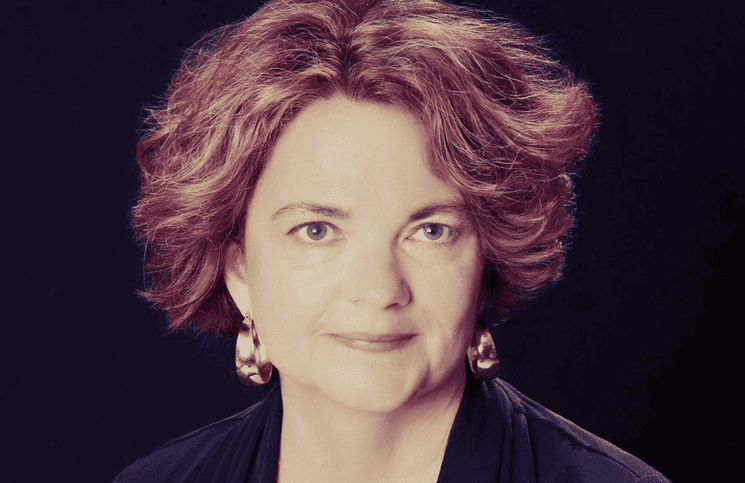“There is an energy to Hamilton and the city feels like it has made an intentional decision to reinvent itself but John is pessimistic about that. He hasn’t jumped on the bandwagon but insists there is nothing wrong with the old Hamilton. He worries about the impact of gentrification,” muses Kay Lange, a fictional character created by Bettianne Hedges, broker at Keller Williams Edge Realty, in her debut novel, Practise of Her Profession.

Hamilton’s gentrification is one of the driving themes in Hedges’ first self-published novel, where her protagonist Kay is a fine arts dealer, who Hedges describes, “has left her position and comfortable life in Montreal to establish a gallery in a beautiful building on the harbour in Hamilton, Ont.
“She went there for two reasons,” says Hedges. “Number one, to be close to her son who was studying at McMaster, but also because the opportunity became available for her to purchase her own gallery.”
Those who know Hedges will assume that her novel’s protagonist is an autobiographical rendering of herself. However, for general readers too, as one gets deeper into the book, Kay Lange’s character as an art gallery owner and a visual artist, with a deep concern for the ongoing gentrification in Hamilton and love for travel, seem to be drawn out of experiences more than just familiar to the author.
“We write what we know,” says Hedges. But Practise of her Profession is more than autobiographical. It is also about wanderlust. It’s about “the trajectory not taken, the life not lived, the choices not taken, and coming to a crossroads to take the different paths,” says Hedges.
The overlap with real estate is that her protagonist purchased a property sight unseen. It was recommended and she made the move. The book goes on to discuss the fallout of that decision and explore themes that are familiar to real estate. Such as how perhaps the municipality oversells an area, in terms of the future of a particular neighbourhood. “The opportunities in the area, the vision may (sometimes) be a little bit ahead of the reality,” says Hedges.
Gentrification has always been a big issue in real estate, says Hedges. Through her novel, she questions the notion of whether property developers are doing the best thing by gentrifying a neighbourhood. Realtors may have clients who feel they are doing something so good for a neighborhood or a city, but those already living there may not agree, she says.
She says that while there are no right or wrong answers to that dilemma, Realtors are hyper aware of both sides of the debate and how it effects their businesses.
Another important theme Hedges draws upon in her novel is that of cultural appropriation. While not a Realtor’s key concern, Hedges is passionate about calling out cultural appropriation, misrepresentation and the need for authentic celebration of Indigenous art and life. “It’s a book about art, art in our life, art in the lives of the community, and how we access a community through its art, how we learn to understand the history and the culture of a community through their visual art,” she says.
In a passage in the novel, Hedges writes, “A joke for you: It’s Halloween and a Canadian Indigenous man opens the door of his suburban home to a neighbourhood ‘trick or treater’. The kid is dressed in full headdress, a war bonnet and carrying a toy bow and arrow. The man at the door says, ‘What are you supposed to be?’ The kid says, ‘I’m an Indian Chief.’ The man nods. ‘Well, I’m a white man,’ and he grabs the kid’s candy. Kay could only laugh.”
While dealt with levity, Hedges cannot be more serious when she says, “Cultural appropriation is a big part of the visual arts in Canada, recognized especially in our indigenous community, and recognizing that when we celebrate something, what is the source of that? And ensuring that that is presented by someone who actually has ownership of the source of that creativity or that symbolism. I think we have a long way to go,” in doing so, says Hedges.
At 57, Hedges is in her 17th year as a Realtor. Until her early 40s she worked for non-profits, specifically in cultural management. But as work-life balance became more of a need, real estate seemed like the only profession that could allow her the time and means she needed to carry on her love for travel, visual arts and her writing pursuits. It helped that Hedges’ mother had a Realtor friend she looked up to as a teenager. “I admired how she was able to give so much of her time and still have this successful career,” says Hedges.
“That’s the wonderful thing about being a real estate. You can structure your time accordingly to follow these interests and give back to your community.”
Through her book, Hedges says she tries to replicate the same sense of discovery she feels and enjoys when working with her real estate clients.
“Being in Hamilton in the last 10 years, seeing the shift of people coming out of the Toronto urban centre, and discovering a place or rediscovering Hamilton,” she says are what makes the Practise of Her Profession as much about Hamilton as about Kay Lange.
Indeed, Hedges says that unwittingly she has made the city a powerful second protagonist in her book. Like her Hamilton-bound clients, Hedges’ novel exudes that “feeling of moving, and learning about a new place, learning about who they are in a new place, how will we change and adapt. That’s a big part of it,” she says.
Sohini Bhattacharya is a contributing writer for REM.














